London has a broad variety of public transportation options, and the Oyster card offers an easy and convenient way to pay for most of them. Oyster cards allow you to get in and out of Tube stations, trams, and buses quickly and easily while still paying the lowest possible fare. While the Oyster card can seem a little intimidating at first, in just a few journeys you can be tapping in and out of London transit like a pro.
StepsMethod 1Method 1 of 3:Adding Fares to Your Oyster Card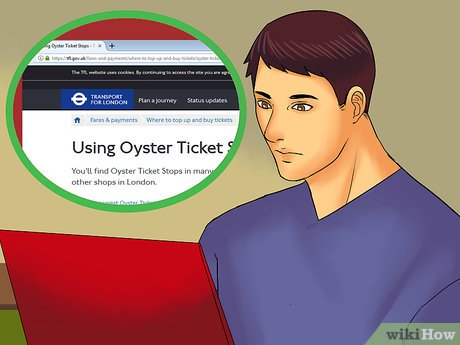
1Purchase your Oyster card. You can purchase an Oyster card in a number of places across London. All Tube, London Overground, and TfL rail stations have them available. In addition, hundreds of newsagents and shops in London can act as Oyster ticket stops, allowing you to buy or refill a car.Oyster cards have a £5, non-refundable activation fee that is due at the time of purchase of a new card.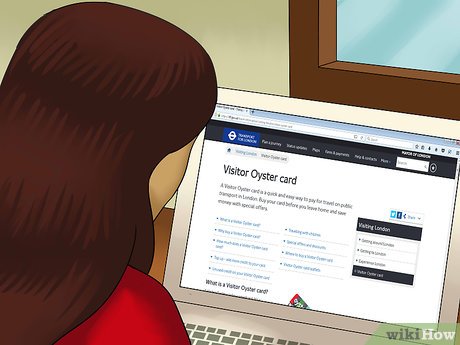
2Buy an Oyster Visitor card online if you are a tourist. If you are visiting from another country, you can also purchase an Oyster visitor card online. This can be shipped to you in advance of your trip, so that you have your card and a set value of ride credit ready to go when you get there. You can buy your card using this link: https://tfl.gov.uk/travel-information/visiting-london/visitor-oyster-card
3Add money to your Oyster card. Adding money allows you to pay your fares as you use London transit systems. You can add money, sometimes referred to as topping up your card, at any of the places where you can buy an Oyster card. You can use cash or credit card. If you live in the UK, you can also add money to your Oyster card through your online account.If you are adding money through an online account, you will need to use a bank or credit card.Since fares on many London transit options are based on distance and time of day, there is no set amount you need to add to your card. Just make sure you have enough to cover your intended trip. You can use the TfL fare finder to help you calculate your costs: https://tfl.gov.uk/fares-and-payments/fares/single-fare-finder?intcmp=1660If you get a yellow light instead of a green light when you tap your card to use it, you don’t have enough money on your card to complete your trip. Top up your card with enough money to ensure that you can complete your journey.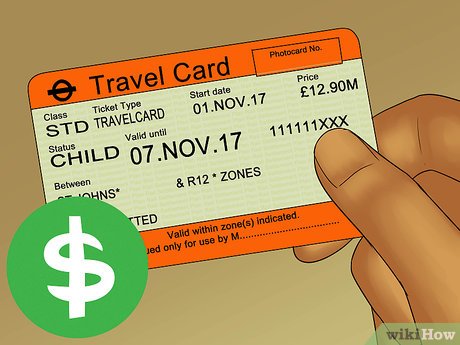
4Add a Travelcard to your card in lieu of fares. Travelcards are passes that allow an unlimited number of rides for a fixed period of time. You can buy Travelcards for a day, 1 days, 1 month, or 1 year periods. Day passes are printed as paper tickets, but the rest make use of the Oyster card.Travelcards are available at different price brackets based on the Zones you will travel in. The more Zones included on your pass, the more expensive the card..XTravelcards can be expensive, so think about how much you really plan on using public transportation before you commit to the cost. A day pass can cost £22.10, which may not be worth the price if you only plan on taking a few rides.Method 2Method 2 of 3:Using Your Oyster Card on Rail Services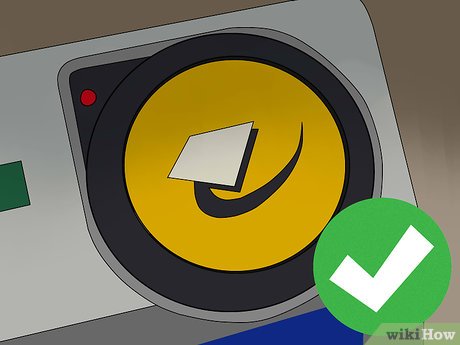
1Locate a yellow card reader. The yellow card readers will be a prominent feature at Tube, tram, and National Rail stations. The card reader, itself, will be mounted next to the gate that lets you on and off the train platform. The reader should be a large, yellow circle, and will often be to the right of the gate you want to enter.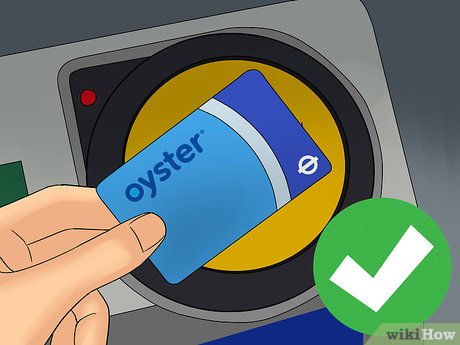
2Tap your card to the reader. You don’t need to insert your Oyster card anywhere. Simply tap it to the card reader and that should allow you access to the platform. Hold your card to the reader until the indicator light at the upper left corner of the reader goes from yellow to green. Once the gates open, proceed through them and onto your platform.Some people choose to leave their card in their purse or wallet and simply tap that against the reader. If you choose to do this, know that the card reader could also detect and deduct fares from any contactless payment cards you’re keeping in the same place, costing you extra.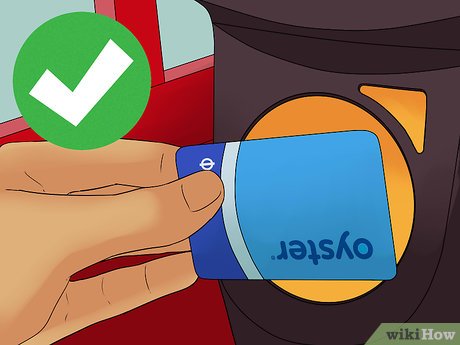
3Tap your card again to leave your destination station. Once you are at your destination stop or station, you will need to tap your card again to get out. Simply proceed toward the exit and you will find another set of gates with yellow card readers. Tap your card to the reader to exit the station. This ensures that you are charged the right amount for your travel.If you fail to tap as you exit, you may be charged the maximum potential amount for your trip. Tapping as you leave ensure that you only get charged for the journey you take.
4Use pink card readers where available to transfer between lines. Some journeys are cheaper than others, and pink card readers help TfL know where you’ve been so that you don’t get overcharged. If you are transferring between lines or stations and you see a pink card reader, tap it to transfer.Not all transfers will have pink card readers. Simply use them when you see them.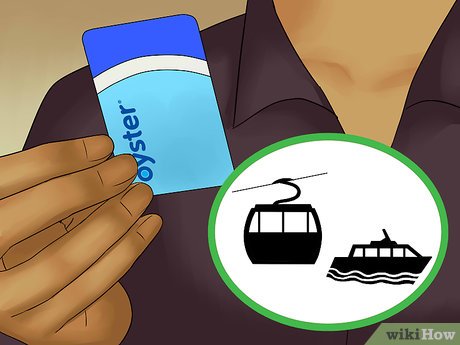
5Use the Oyster card the same way for other transportation. Not only is the Oyster card accepted on rail transit in London, you can also use it to tap in and out for the MBNA Thames Clipper river bus, as well as the Emirates Air Line cable car. If you are visiting London, paying for these with your visitor Oyster card could even get you a discount.XFor the river bus, you may receive a discount of 10% on most routes. For the cable car, you may receive a discount of 25%.Method 3Method 3 of 3:Using Your Oyster Card on Buses and Trams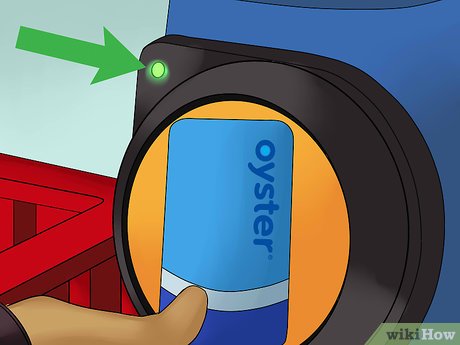
1Touch your card to the yellow reader on the tram platform. If you are boarding a tram, touch your card to the yellow reader on the platform prior to boarding. Wait for the yellow light to turn green, and proceed onto the tram.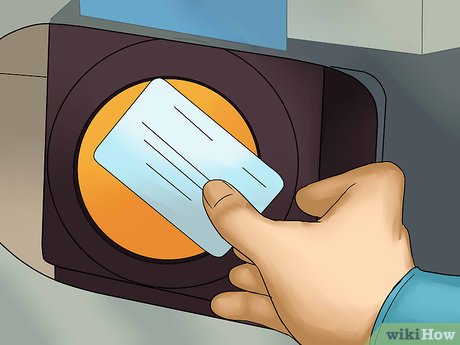
2Touch your card to the yellow reader on the bus as you board. On buses, the card reader is located inside the bus. Touch your card to the yellow reader and wait for the yellow light in the upper left corner to turn green. Then, proceed onto the bus.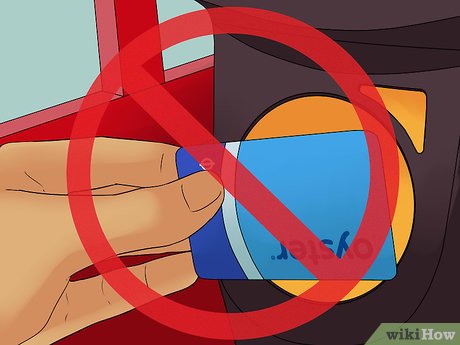
3Do not tap to get off the bus or tram. Buses and trams do not require you to tap to exit. Do not proceed to a reader and try to tap as you exit. Buses and trams have flat fares that are charged as you get on, so you can simply exit the tram or bus.








